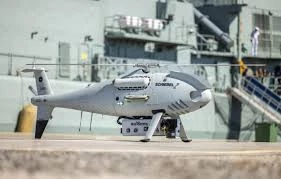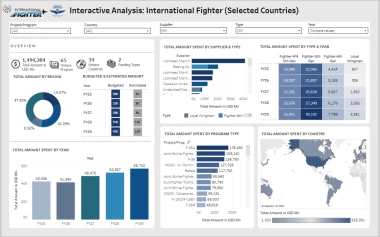Now is the Time for the U.S. to Lead (and Benefit from) the UAS Boom
Add bookmarkGlobal to Local - Now is the time for U.S. States and Cities to Lead (and Benefit from) the UAS Boom
The rapidly evolving geopolitical and economic international landscape is even more tumultuous in light of the COVID-19 pandemic, further emphasizing the use of autonomous technologies in society. Unmanned Aerial Systems (UAS) is one such technology that is fundamentally changing the global landscape, from retail and medicine delivery to imagery and agriculture.
Further, UAS has profound implications for both the commercial industry and government, reaching many aspects of our lives. Startups in the United States (U.S.) are developing many of these technologies, with potential to spur economic growth particularly for the communities in which they are based.
Yet, while these companies offer high-potential, the vast majority of U.S.-based UAS startups are concentrated in only a handful of tech hubs. Developing the ecosystem in this manner risks hindering the diversity and functionality of UAS applications, as well as skewing the distribution of economic benefits across states and cities in the U.S. to only a few locations. Such a scenario would result in cities and states missing out on UAS’ economic potential, and the UAS market under-developing.
In light of the worsening economic damage caused by the COVID-19 pandemic, it is now even more critical for the recovery of cities and states that they take a forward leaning role in order to attract new jobs and industries. The pandemic which has had an outsized impact on high-density cities, could lead to a reversal in the sprint to megacities, offering potential opportunities smaller areas.
In addition, the current geopolitical environment is spurring the U.S. Federal Government to ramp up their push into the startup space and UAS is no exception. Traditionally, there was niche funding available from organizations like In-Q-Tel, the U.S. intelligence community’s venture investment arm. However, now a wide array of government funding is available for UAS companies. This funding includes an array of opportunities such as grants, Small Business Innovation Research (SBIR) programs, non-dilutive matching of venture capital investment (e.g. via AFWERX), major opportunities – such as the forthcoming General Services Administration (GSA) ASTRO IDIQ (with a rumored $100bn ceiling), and access to further capital via initiatives like the Trusted Capital Marketplace. These funding sources offer significant growth opportunities, potential consistent longer-term contracts, and – critical for states and local governments – revenue that can result in new, better jobs in their area, which boost governments respective coffers.

The above only includes UAS startups who have received at least $1mm in venture funding and have been in business for at least three years
With that said, changing the current landscape is not an easy task. UAS startups concentrate in innovation hubs such as Silicon Valley for good reason; municipalities in these locales typically offer favorable regulation for startups, economic incentives to locate there, and the ecosystems are flush with networks that support startups which include incubators, venture capitalists, corporate acquirers, and a deep, diverse talent pool of engineers and entrepreneurs. These qualities don’t develop overnight; however, states and cities that are not currently considered tech hubs can still attract UAS players. To do so, municipalities must develop a holistic approach across regulations, incentivization, and talent engagement.
UAS Regulation
A key regulatory hurdle for UAS experimentation is operating in urban environments, where UAS usage is restricted and operators often run into conflict with property owners. Because UAS technology requires significant space to test and operate, urban environments do not serve well in fostering open-air testing and related R&D. Alternatively, many states and rural municipalities offer copious amounts of open land, and their low population densities offer a promising venue for UAS incubation labs that need open-air backdrops for testing. Many companies are formalizing their drone experimentation campaigns as drone usage becomes more widespread. For example, Amazon recently re-opened its UAS package delivery initiative, which had originally encountered significant challenges to go-to-market when the company launched it in 2014.
Large land area and low population concentration also make ideal locations for kick starting UAS pilot programs for both commercial and government applications. Commercial examples include shipping, architecture, and engineering. Government examples include, among others, emergency services and surveillance. Municipalities in land-rich regions can attract UAS startups by either reducing regulatory barriers or designating regulatory-compliant backdrops to test and perfect some of the highest potential UAS applications. Pioneering in policy that enables societal integration will attract rising startups and big tech companies such as Amazon.
Incentives
While space and low population density are both important, affordable land also offers a prime opportunity for UAS startups to stand-up large-scale hardware manufacturing facilities. Rapidly growing startups will seek out operating spaces outside of the typical urban tech hubs once they mature. To get in front of this, governments should begin to consider offering economic incentives such as tax credits and grants to attract high-potential, early-stage companies. However, to cultivate a truly self-sustaining ecosystem, governments will need to think beyond just the startups; what can they offer to incubators, investors, and corporate acquirers moving to their jurisdiction? Adjusting tax laws or providing exceptions for innovative players may also help attract both startups, and their support networks needed to thrive.
Talent
Another key challenge for state and local governments is attracting talent. Top performing startups and leading technology conglomerates need access to a deep pool of talent with diverse skillsets. Locations outside of urban mega-cities again possess an opportunity to win in this category. High living costs and wealth inequality in many tech-driven cities have caused undesirable living conditions for workforces in those locations. This has escalated to a degree in which many tech industry workers and entrepreneurs are seeking out more affordable regions to settle. State and local governments can tap into this potential by offering programs that favor newcomers, such as tax credits for tech workers and entrepreneurs, or opportunities to make owning a home more reachable.
What Caused Silicon Valley to Emerge Anyway?
Silicon Valley became an innovation hub because, among many factors, living was cheap and the quality of life was high, allowing for entrepreneurs to take risks and focus on innovating. In the wake of shifting demographics and the rapidly growing UAS market, state and local governments now hold an opportunity to replicate the conditions that gave rise to Silicon Valley and bring innovation - and jobs - to their economy. UAS, among other technologies, boasts significant potential for regions across the U.S. – now state and local governments must cultivate the right policies to realize it.
Nicholas Nelson is the Director of Strategic Development at a global aerospace, defense, and technology company. Prior to this, he worked as a strategy manager and management consultant in the aerospace, defense, and government services sectors in both the U.S. and Europe, as well as serving as a U.S. Department of Defense civilian. In addition, Nicholas mentors emerging technology startups focused on unmanned systems and space, as well as serving as advisor on these issues for government agencies.
Andrew Stiles is a management consultant at an international consulting firm, where he focuses on emerging technologies and innovation for both commercial and government clients. He previously worked as a consultant for a technology company, and is a graduate of Hamilton College.


























